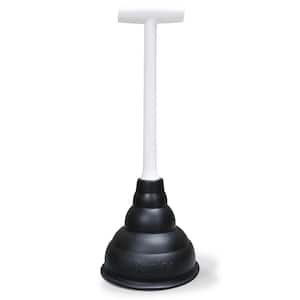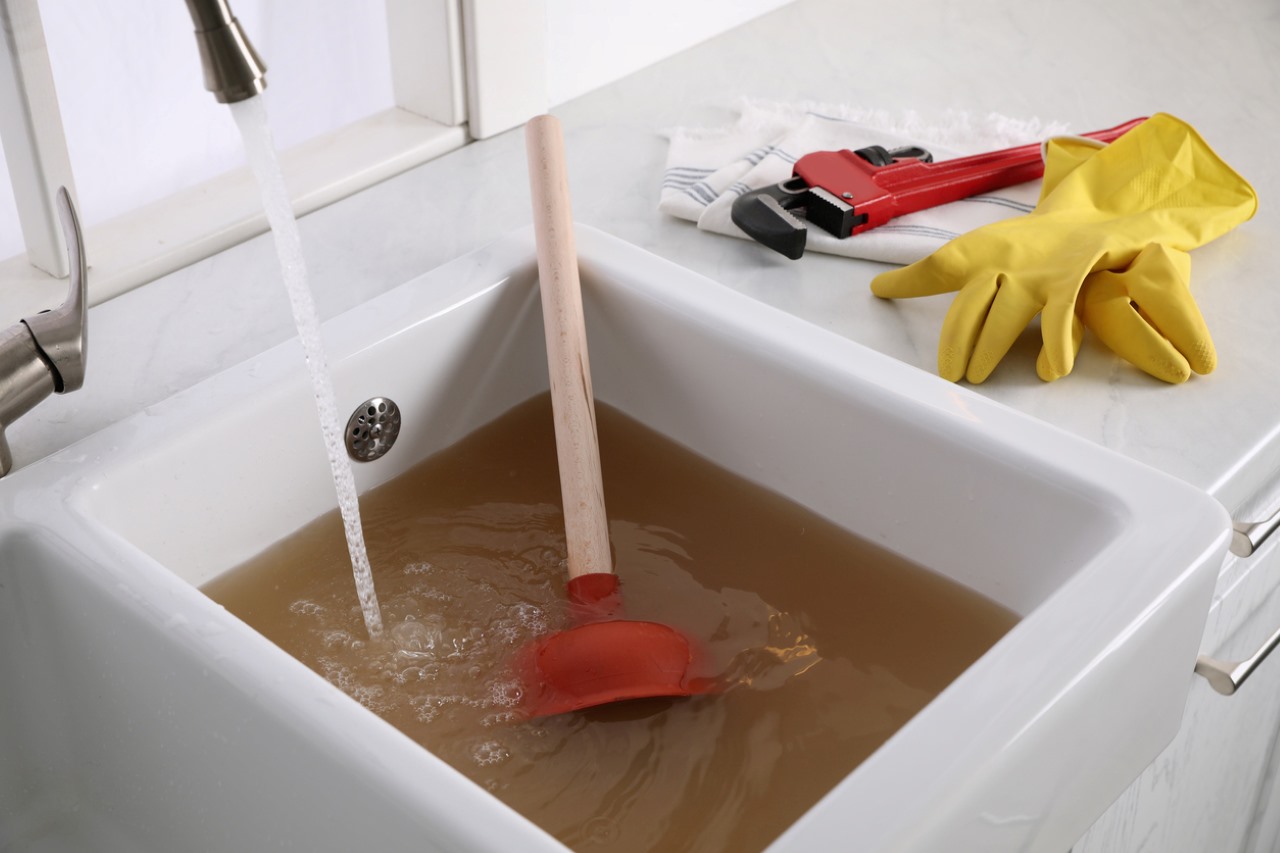Almost everyone will have their own perception when it comes to How to Use a Plunger to Unclog a Toilet or Drain.

Introduction
Appropriate upkeep of home drains pipes is essential for avoiding clogs and guaranteeing smooth water circulation. Among the key devices in every property owner's toolkit is the plunger, along with numerous drain cleaners designed to take on stubborn clogs properly. This post explores just how to use bettors and drain cleansers efficiently to maintain your drains moving freely.
Area 1: Comprehending Plungers
Kinds of Plungers
There are several kinds of bettors readily available, each created for various kinds of drains pipes and obstructs. One of the most common types include cup bettors, flange bettors, and accordion bettors.
Just How Plungers Work
Bettors service the principle of developing stress and suction to dislodge clogs. When correctly used over a drain, they create a vacuum cleaner that can take out particles or separate clogs.
Choosing the Right Plunger
Picking the best plunger depends upon the sort of drain and the nature of the obstruction. Cup plungers are perfect for sinks and bathtubs, while flange plungers are much better suited for commodes due to their style.
Common Errors with Plungers
Preventing these mistakes makes sure efficient plunging: improper seal around the drainpipe, not enough force, and not clearing bordering particles.
Section 2: Utilizing Plungers Properly
Prep work
Before diving, make sure the bettor covers the drain entirely and develops a limited seal. Clear any kind of visible debris around the drain opening.
Strategy
Begin with gentle diving motions to build suction. Increase stress slowly, making use of a consistent rhythm. Repeat as needed until the drainpipe clears.
Troubleshooting Tips
If plunging does not work, try changing the seal, applying oil jelly for a far better seal, or utilizing a different type of bettor.
Area 3: Understanding Drain Cleansers
Sorts Of Drainpipe Cleansers
Drain cleansers can be chemical or chemical. Chemical cleaners use strong chemicals to liquify obstructions, while enzymatic cleansers utilize natural enzymes to break down organic matter.
Exactly How Drainpipe Cleansers Job
Chemical cleansers respond with clogs to liquify them, while enzymatic cleansers break down organic materials like hair and grease without damaging pipes.
Safety and security Considerations
Always put on gloves and eye security when utilizing chemical drain cleansers. Guarantee adequate air flow and comply with maker instructions carefully.
Eco-Friendly Alternatives
Think about using vinegar and baking soft drink or enzyme-based cleaners for environmentally friendly alternatives that are safer for pipes and the setting.
Area 4: Utilizing Drain Cleaning Company Properly
Application Techniques
Put chemical cleansers directly right into the drainpipe opening. Permit them to benefit the recommended time before purging with warm water. Chemical cleansers must sit over night.
Preventative measures
Avoid mixing different sorts of cleansers, as this can produce harmful fumes. Never utilize chemical cleansers combined with a bettor, as splashing can occur.
Taking Care Of Stubborn Obstructions
For relentless obstructions, consider using a plumbing serpent or calling a specialist plumbing to stop damage to pipelines.
Conclusion
To conclude, understanding exactly how to use plungers and drain cleaners effectively is crucial for maintaining healthy pipes systems. By choosing the right devices and techniques, property owners can deal with minor obstructions and protect against major plumbing problems down the line.
6 Common Drain Cleaning Mistakes and How to Avoid Them
Chemical Meltdown
When you have a blocked drain, one of the first solutions you may think of is to get chemicals to clear it. There are a lot of drain cleaning chemicals on the market and many make huge promises.
However, they often don’t live up to their promises. Depending on the kind of blockage you have, they may only worsen the problem and deepen your frustration.
If you have solids blocking a drain, it’s unlikely that chemicals will be able to clean it effectively. If the chemical is harsh but still cannot dissolve the blockage, then you are stuck with the blockage plus the chemicals inside the drain. Drain cleaning chemicals are toxic and can end up doing more harm than good.
Incorrect Plunging
One of the first drain cleaning tools you will probably reach for when you have a blockage is a plunger. There are several different plungers out there and they’re all made for separate kinds of drains. To get the job done, you need to choose the right plunger for the job.
Sink plungers will have a bell-shaped bottom. Toilet plungers, on the other hand, will have a flat bottom. However, even if you do have the right plunger, you need to make sure that you’re using it correctly.
Place it over the drain and completely seal it off. Push the plunger slowly and precisely, up and down. If you plunge too fast, you may push some of the matter that’s blocking the drain too far down.
Take your time when plunging. It’s understandable that you want to unblock the drain quickly, but plunging too fast can make matters worse.
Poking Into the Drain
After you’ve tried chemicals and even a plunger without much result, you may decide to get creative. But doing this while trying to unblock a drain can go badly.
For example, many people will try to dislodge the blockage by unbending a hanger and sticking it down the drain, but poking at the blockage is never a good idea.
Also, don’t try to use a stick to poke down the drain. It may break, leaving you with bigger problems. More often than not, once a plunger has failed to unblock the drain, poking something down may shove the matter causing the blockage to go further down the drain.
Sticking things down the drain can also put dents and holes into your drain pipe, which could leave you with a costly plumbing bill.
Garden Hosing
When you have a blocked drain outside, you may be tempted to grab your hose and start applying some pressure to try to unblock the drain.
Hydro jetting a blocked drain should be done with equipment that is designed for this purpose.
A garden hose is not the ideal equipment for trying to unblock a drain. The pressure from it will probably not be heavy enough to unblock the drain. This is especially true if the drain is outside and has been blocked by tree roots or even small animals.
Attempting to DIY hydro-jetting can cause flooding which will only make matters worse. It may also cause damage to the pipes.
Incorrect Use of a Drain Snake
A mechanical snake is a great way to unclog a drain. However, it should not be abused.
Do not force the drain snake around pipe corners that are hard to navigate. Using a drain snake too frequently and incorrectly can damage pipes leading to expensive repairs.
Avoiding the Plumber
DIY projects are to be celebrated. We understand that some homeowners would prefer to do repairs themselves to save some money . But there are certain instances where it’s just more cost-effective to call in a professional to deal with the problem.
If you’ve tried everything to unclog your drain and nothing is working, then there’s no need to go any further. It’s time to call a plumber!
https://trusteyman.com/blog/6-common-drain-cleaning-mistakes/

I discovered that entry about when doing a search on the search engines. Do you know about anybody else who is interested by How to Use a Plunger to Unclog a Toilet or Drain? Feel free to share it. Thanks a lot for your time spent reading it.
Call Today
Comments on “Ways to Use Plunger and Drain Cleaners Properly: Pro Guidance”